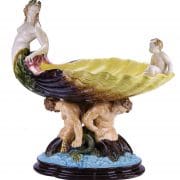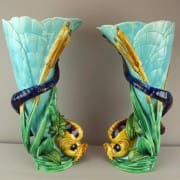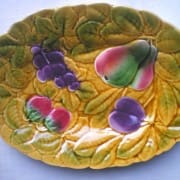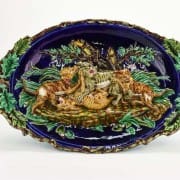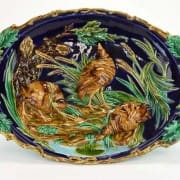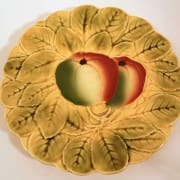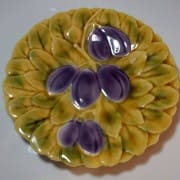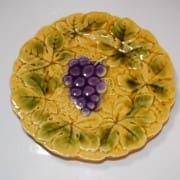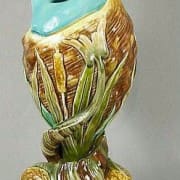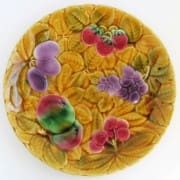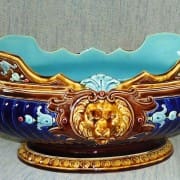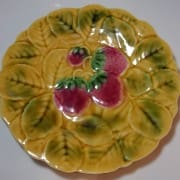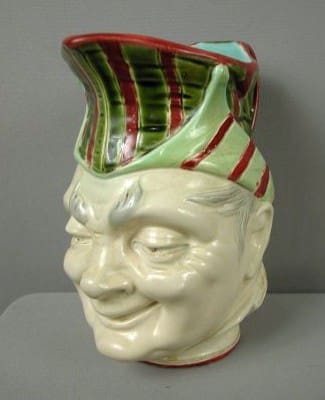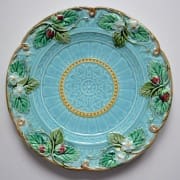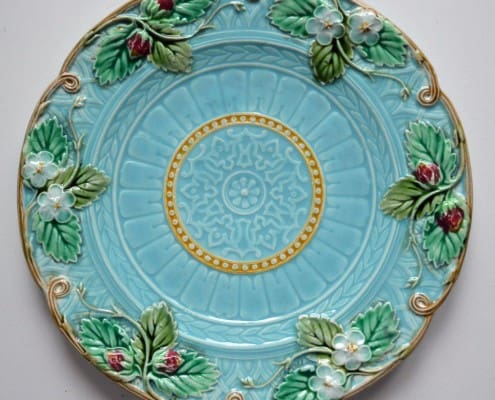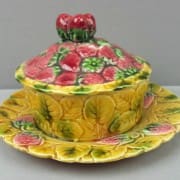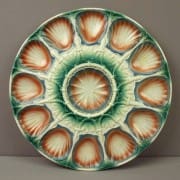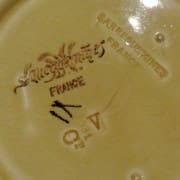Sarreguemines
The Sarreguemines pottery was established about 1784 by brothers Nicholas-Henri and Paul-Augustin Jacobi and partner Joseph Fabry. The enterprise remained unsuccessful until 1800 when Paul Utzschneider assumed management. Thereafter, the business expanded and prospered. The Sarreguemines factory produced most of the original tiles used during the construction of the Paris metro. Majolica was added to its production in the 1860s. At the conclusion of the Franco-Prussian War in 1874, Sarreguemines became German territory. In order to maintain the firm’s French nationality, two additional facilities were constructed in Digoin and Vitry-le-François. Sarreguemines ceased production in 2007 and the firm was subsequently liquidated.
The most popular majolica pattern was a series of different fruits on a molded bed of yellow leaves. The pattern was produced well into the twentieth century. Sarreguemines is well known for its variety of humorous character jugs, but also produced a variety of majolica tureens, vases, asparagus items and figural pieces.
Sarreguemines majolica was marked with an impressed SARREGUEMINES, sometimes with MAJOLICA above. Later pieces were marked with a stamped heavy script ‘Sarreguemines’.
Photo Credits:
Strawser Auctions
Live Auctioneers
Ebay images
Madelena Antiques
Antiques from Trilogy
Philppe Meunier & Juan-Alonso Defrocourt
Karmason Library



